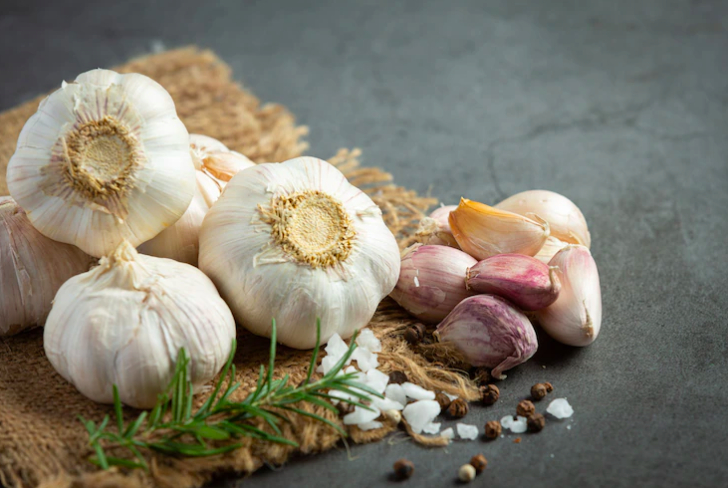Garlic is a versatile and flavorful crop that can be successfully grown in South African gardens. Whether you’re a seasoned gardener or a beginner, here are ten important things you should know before embarking on garlic cultivation in South Africa:
- Climate and Season: Garlic prefers a cool climate with mild winters and moderate summers. In South Africa, garlic is typically planted in autumn, allowing it to establish roots before the cold winter sets in.
- Variety Selection: There are various garlic varieties available, each with its unique flavor, size, and storage characteristics. Popular varieties for South African conditions include Italian Late, Early Purple, and Elephant Garlic. Consider factors such as taste preferences, bulb size, and disease resistance when selecting a variety that suits your needs.
- Soil Preparation: Garlic thrives in well-drained, fertile soil with good organic matter content. Prepare the soil by removing weeds, loosening it with a garden fork or tiller, and incorporating compost or well-rotted manure to improve its structure and nutrient content. Aim for slightly acidic to neutral soil with a pH level between 6.0 and 7.5.
- Seed Selection: Garlic is propagated using individual cloves. Purchase high-quality garlic bulbs from reputable sources to ensure disease-free and healthy cloves for planting. Avoid using garlic bulbs from grocery stores, as they may be treated with chemicals to inhibit sprouting.
- Planting and Spacing: Separate the garlic bulb into individual cloves just before planting, leaving the papery skin intact. Plant the cloves with the pointed end facing up and bury them about 2 to 4 inches (5 to 10 centimeters) deep, spacing them around 6 to 8 inches (15 to 20 centimeters) apart in rows with 12 to 18 inches (30 to 45 centimeters) spacing.
- Watering: Garlic requires consistent moisture, especially during its early growth stages. Water the plants regularly, ensuring the soil is evenly moist but not waterlogged. Avoid overwatering, as excessive moisture can lead to diseases and rotting. Reduce watering as the plants near maturity to allow the bulbs to dry out.
- Nutrient Management: Garlic has specific nutrient requirements for optimal growth and bulb development. Conduct a soil test to assess nutrient levels and make appropriate amendments. Incorporate organic matter, such as compost or well-rotted manure, before planting. Side-dress the plants with a balanced organic or slow-release fertilizer during the growing season.
- Weed Control: Keep the garlic bed free from weeds to reduce competition for nutrients and sunlight. Regularly weed the area by hand or use mulch to suppress weed growth. Be careful when weeding to avoid damaging the shallow roots of the garlic plants.
- Pest and Disease Management: Garlic is generally less susceptible to pests and diseases than other crops. However, common issues can include aphids, onion thrips, and fungal diseases like white rot or downy mildew. Practice crop rotation, maintain good airflow around the plants, and monitor for signs of pests or diseases. Use organic or chemical controls as necessary.
- Harvesting and Curing: Garlic is ready for harvest when the leaves start to yellow and dry out. Gently dig up the bulbs using a garden fork or shovel, being careful not to damage them. Allow the harvested garlic bulbs to cure in a warm, dry, and well-ventilated area for two to three weeks. After curing, trim the roots and tops and store the garlic bulbs in a cool, dark place with good airflow.
By considering these ten crucial factors before growing garlic in South Africa, you’ll be better prepared to cultivate a successful crop. Remember to stay updated on the latest research and agronomic practices specific to garlic cultivation in your region. With proper care and attention, you can enjoy a bountiful harvest of flavorful garlic bulbs from your South African garden.
Join 'Farmers Mag' WhatsApp Channel
Get the latest Farming news and tips delivered straight to your WhatsApp
CLICK HERE TO JOIN






